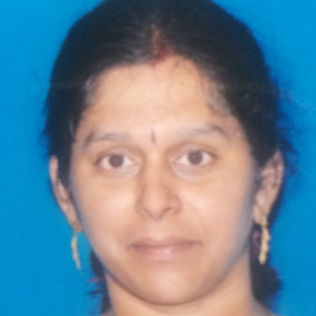International Journal of Computer Network and Information Security (IJCNIS)
IJCNIS Vol. 11, No. 2, 8 Feb. 2019
Cover page and Table of Contents: PDF (size: 628KB)
An Efficient Image Block Encryption for Key Generation using Non-Uniform Cellular Automata
Full Text (PDF, 628KB), PP.28-35
Views: 0 Downloads: 0
Author(s)
Index Terms
Cellular Automata, Cryptography, Security, Session Key Agreement, Reversible Rule
Abstract
Cryptographic image block encryption schemes play a significant role in information enabled services. This paper proposes an image block encryption scheme based on a novel three stage selection (TSS) method in a public cloud with reversible cellular automata. Due to the openness of public cloud, different attacks are possible over user sensitive information. The TSS method has three stages and they generate a robust master key with user plaintext as input and produces an encrypted block as key to be sent to authenticated users. An analysis of experimental results shows that this new method has a large key space and immune to brute force attacks, statistical cryptanalysis attacks and chosen plaintext attacks. Also, the encrypted image entropy value could be increased to 7.9988 making it ideal for a best image block encryption for key generation.
Cite This Paper
G. Kumaresan, N. P. Gopalan, T. Vetriselvi, "An Efficient Image Block Encryption for Key Generation using Non-Uniform Cellular Automata", International Journal of Computer Network and Information Security(IJCNIS), Vol.11, No.2, pp.28-35, 2019. DOI:10.5815/ijcnis.2019.02.04
Reference
[1]A. A. Abdo, L. Shiguo, I. A. Ismail, M. Amin and H. Diab. A cryptosystem based on elementary cellular automata. Commun Nonlinear Sci Number Simulat, 18:136-147, 2013.
[2]Y. N. Abolfazl, H. M. Mohammed, and N. T. Masood. Color image encryption based on hybrid hyper chaotic system and cellular automata. Optics and Lasers in Engineering, 90:225-237, 2017.
[3]P. Anghelascu. Encryption algorithm using programmable cellular automata. IEEE World Congress in Internet Security, pages 233-239, 2011.
[4]R. Buyya, C. Yeo, S. Venugopal, J. Broberg, and I. Brandic. Cloud computing and emerging IT platforms vision hype and reality for delivering computing as the 5th utility. Future generation computer systems, 25:599-616, 2009.
[5]G. Cheng, L. Ningqi, A. B. Zakrirul, J. Yingmo, C. Yuvanfong, F. Ben, and A. Muhammad. Key aggregate authentication cryptosystem for data sharing in dynamic cloud storage. Future Generation Computer Systems, 84:190-199, 2018.
[6]Img512. Miscellaneous gray level images accessed november 2018. Accessible at http://www.decsai.ugr.es/cvg/dbimagenes/g512.php., 2018.
[7]C. Junxin, Z. Yu, Q. Lin, F. Chong, and X. Lisheng. Exploiting chaos based compressed sensing and cryptographic algorithm for image encryption and compression. Optics Lasers Technology, 99:238-248, 2018.
[8]A. Kerckhoff's. La cryptographie militaire. Journal des sciences militaires, 9:161-191, 1883.
[9]G. Kumaresan, N. P. Gopalan. An analytical study of cellular automata and its applications in cryptography. International journal of computer network and information security, 9:45-54, 2017.
[10]G. Kumaresan, N. P. Gopalan. EduCloud: A dynamic three stage authentication framework to enhance security in public cloud. International journal of engineering and manufacturing, 6:12-26, 2017.
[11]G. Kumaresan, N. Veeraragavan and L. Arockiam. A dynamic two stage authentication framework to enhance security in public educloud. International journal of applied engineering research, 10:126-131, 2015.
[12]B. Lee, B. Robert, C. Shilong, H. Mike, L. Fang, K. Viktor, and Jian. Useful information for cloud adopters. NIST cloud computing program, 2:1-73, 2011.
[13]P. Mell T. Grance. The NIST definition of cloud computing version 15 technical report. Computer and information Sciences, 53:1-10, 2009.
[14]S. Sen, C. Shaw, D. R. Chowdhuri, N. Ganguly, and P. Chaudhuri. Cellular automata based cryptosystem. ACRI, Geneva, Switzerland, pages 303-314, 2002.
[15]A. Seredynski, Bouvry, P. Albert, and Y. Zomaya. Cellular automata computations and secret key cryptography. Parallel Computing, 30:753-766, 2004.
[16]N. K. Sreelaja and G. A. Vijayalakshmi. Swarm intelligence based key generation for stream cipher. Security and Communication Network, 4:181-194, 2011.
[17]S. Subashini, V. Kavitha. A survery on security issues in service delivery models of cloud computing. Journal of network and computer applications, pages 1-11, 2011.
[18]X. Wang and D. Luan. A novel image encryption algorithm using chaos and reversible cellular automata. Commun Nonlinear Sci Number Simulat, 18:3075-3085, 2013.
[19]X. Wang, Y. Zhao, H. Zhang, and K. Guo. A novel color image encryption scheme using alternate chaotic mapping structure. Optics Lasers and Engineering, 82:79-86, 2016.
[20]S. Wolfram. Random sequence generation by cellular automata. Advanced Applied Mathematics, 7:123-169, 1986.
[21]Z. Yunpeng, L. Xin, and S. Manhui. Dna based random key generation and management for otp encryption. Biosystems, 159:51-63, 2017.
[22]W. Zhendong, T. Longwei, L. Ping, W. Ting, J. Ming, and W. Chunming. Generating stable biometric keys for flexible cloud computing authentication using finger vein. Information Sciences, 433:431-447, 2018.


